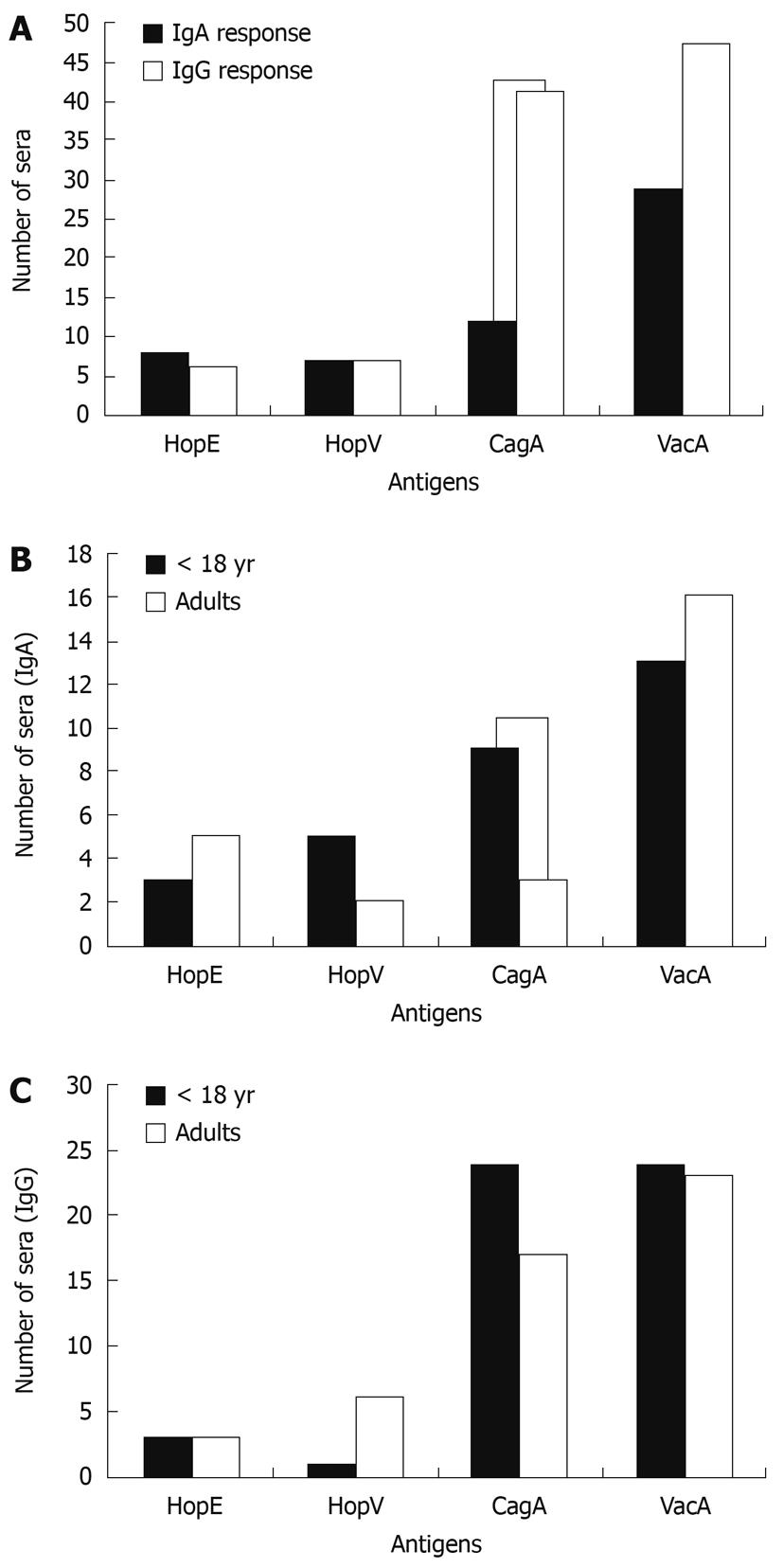Copyright
©2010 Baishideng.
World J Gastroenterol. Jan 21, 2010; 16(3): 320-329
Published online Jan 21, 2010. doi: 10.3748/wjg.v16.i3.320
Published online Jan 21, 2010. doi: 10.3748/wjg.v16.i3.320
Figure 4 Frequency of recognition of 4 H.
pylori antigens by human sera. Bars represent number of immunoreactive human sera from a panel of 69 H. pylori-infected patients showing IgG- and IgA-type immunoreactivity tested by Western blotting assays on E. coli lysates expressing separately HopE, HopV, CagA and VacA cloned antigens. A: Frequency of IgA- and IgG-type immune responses (as number of sera) which reacted with lysates containing one of these antigens; B: IgA response data taken from panel A, with patients separated by age into 2 groups: under 18 years old and adults; C: IgG response data taken from panel A, separated by age as above. As negative controls, sera from 8 non-infected patients did not display any immune response when tested with these antigens (not shown). Fisher’s test was used for statistical analysis, and significance lower than 0.05 is indicated.
-
Citation: Lienlaf M, Morales JP, Díaz MI, Díaz R, Bruce E, Siegel F, León G, Harris PR, Venegas A.
Helicobacter pylori HopE and HopV porins present scarce expression among clinical isolates. World J Gastroenterol 2010; 16(3): 320-329 - URL: https://www.wjgnet.com/1007-9327/full/v16/i3/320.htm
- DOI: https://dx.doi.org/10.3748/wjg.v16.i3.320









